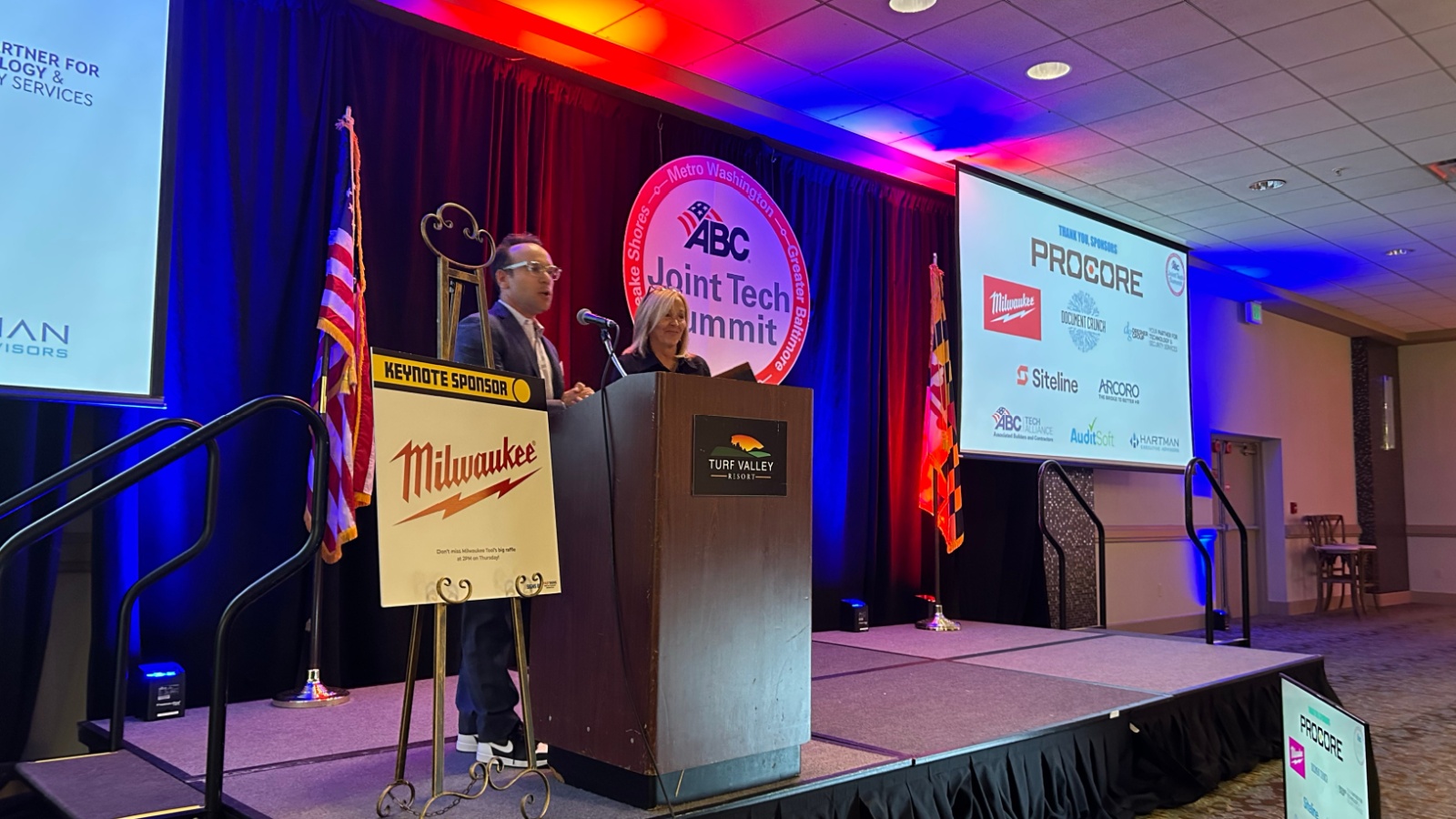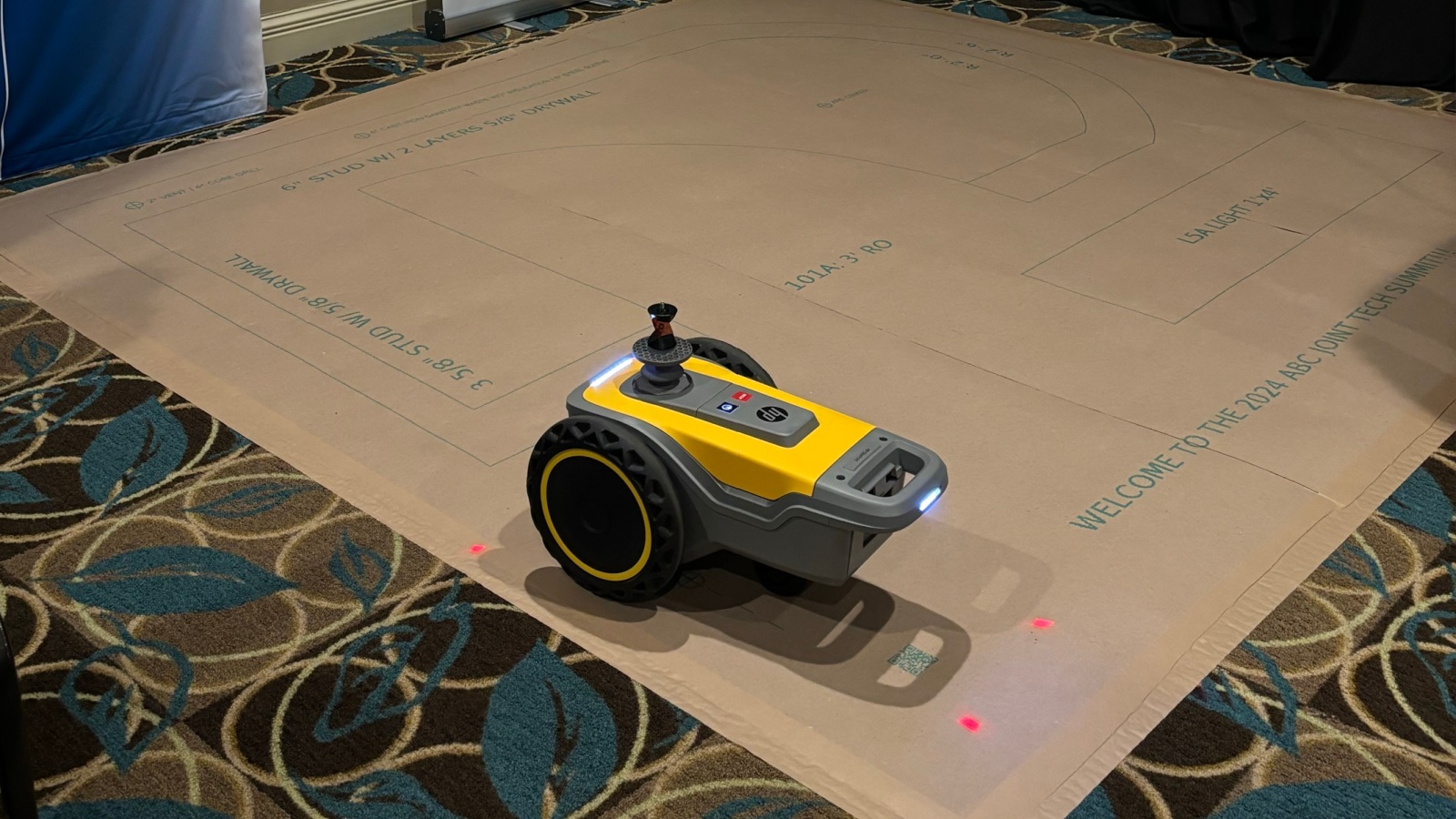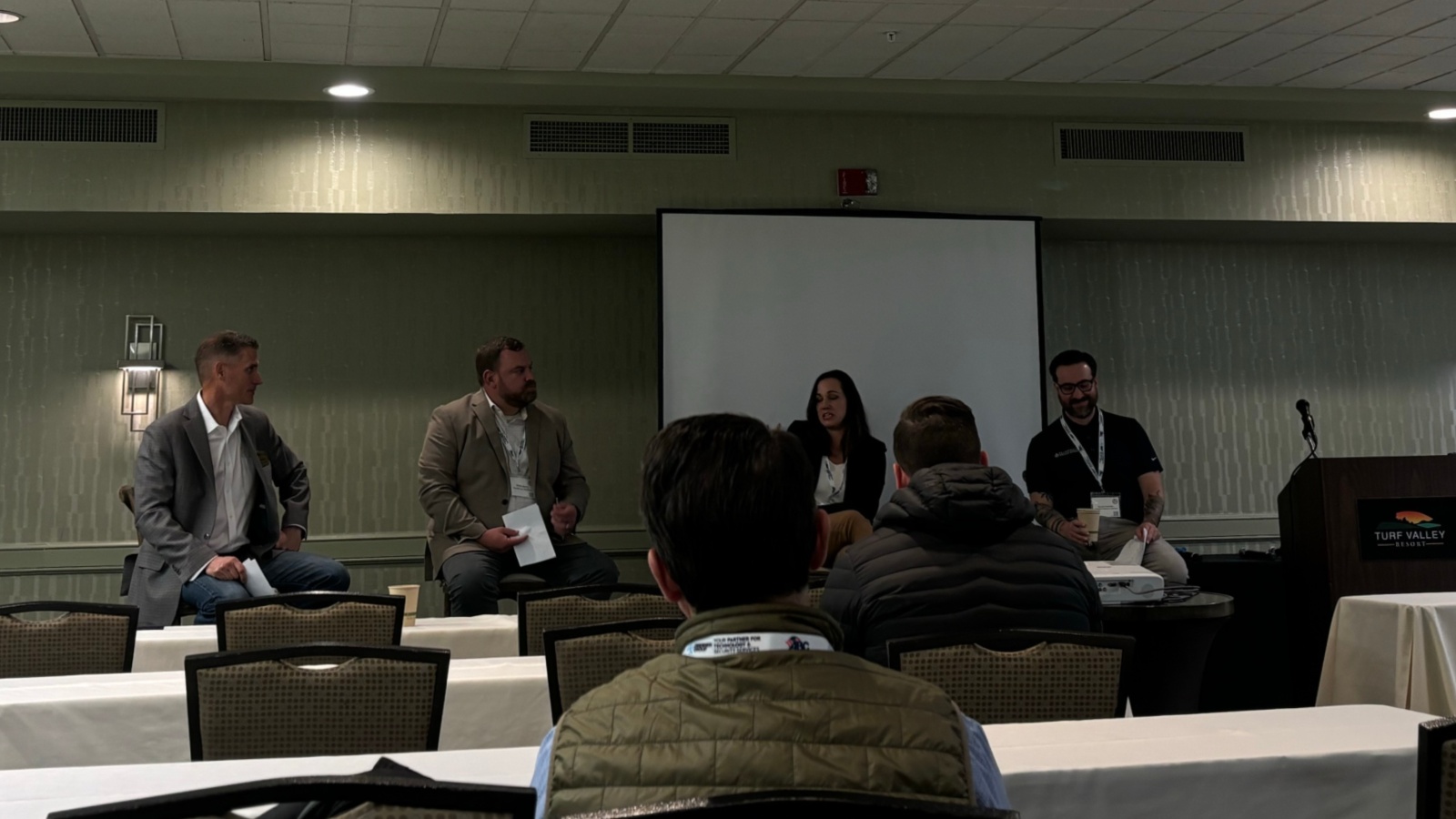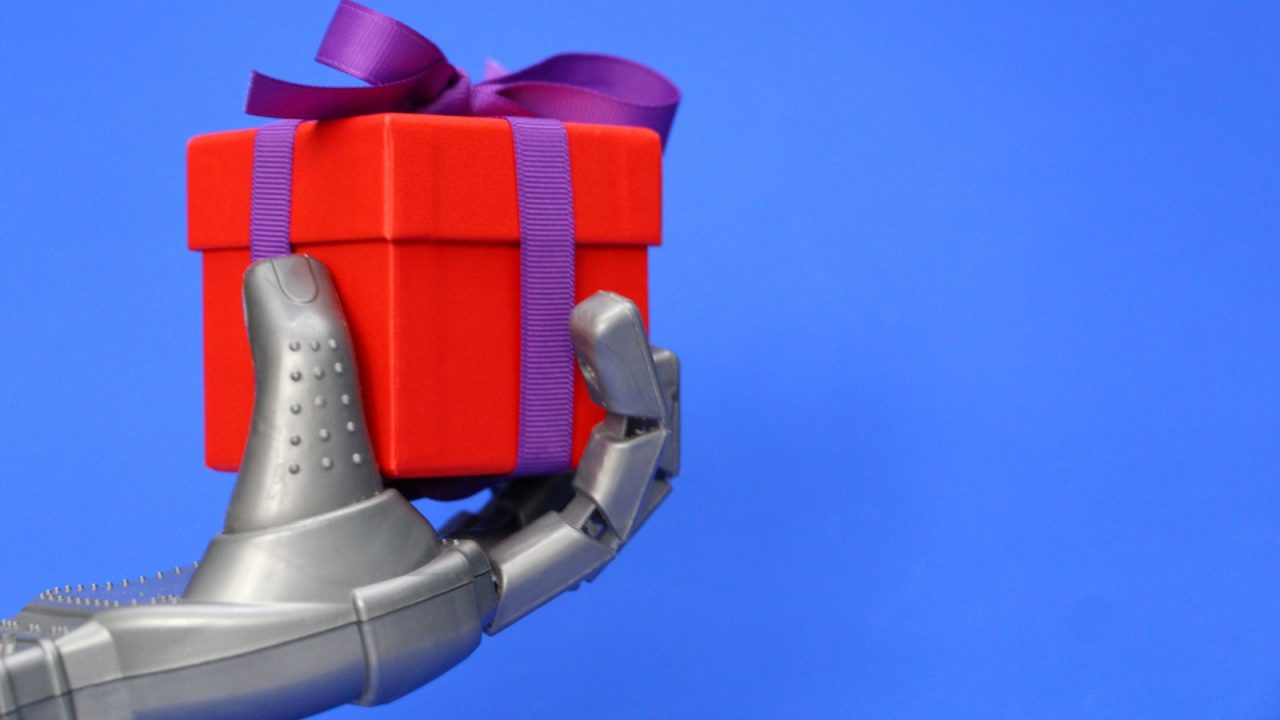Culture seems to be becoming a buzz word in the construction industry: company culture, safety culture, a culture of caring. But what about a technology culture? That was the overall message at the 2024 ABC Join Tech Summit.
Held at the lush Turf Valley Resort in Ellicott City, Maryland, on April 24-25, the summit was presented by ABC’s Chesapeake Shores, Metro Washington, Greater Baltimore and Virginia chapters, and included ABC strategic partners and industry-leading tech companies.

‘WE CAN’T GET COMFORTABLE’
The summit kicked off on Wednesday, April 24, with a welcome dinner and cocktail reception, followed by a day of breakout sessions and exhibitors on Thursday. Brian Calcagno, an industry partnership manager at Procore, took the stage Thursday morning to talk about the crux of company culture: mental health. As a veteran and now a member of the construction industry, Calcagno knows first hand how important mental health is to the health of a workforce. Today, technology is reaching a place where it can help not only address but improve mental health.
Andy Lambert, director of product at Milwaukee Tool, followed with this message: “We can’t get comfortable.” Companies need to constantly evolve to continue to prosper, both culturally and technologically. As an example, Lambert cited the evolution of Milwaukee’s tool products: from the first cordless pieces of technology (power tools) to today’s machine learning.
SHOW AND TELL
The morning seamlessly transitioned into crowd-favorite mini-tech presentations. Oracle’s Josh Kanner demonstrated how the company’s artificial intelligence can be implemented for improved safety. Its predictive analytics are able to analyze a company’s entire portfolio of jobsite against a set of factors (weather, workforce, worker conditions, jobsite conditions, etc.) and gauge which jobsite is the most susceptible for potential risk.
Using this technology, Kanner noted, some companies have seen a 75% reduction in workers’ compensation rate, while others have seen a 60% reduction in TRIR and savings of millions of dollars from avoided incidents. “We know everybody’s data is different,” Kanner said, emphasizing that you need quality data to build a predictive model .
Togal AI’s Johnny Maghzal followed up with a presentation on AI for estimating, demonstrating how Togal’s program is able to cut approximately hours of work down to minutes. While this tech-induced efficiency and productivity might make some fear they will lose their jobs to AI, “We are not trying to replace estimators,” Maghzal said. “That would be naïve of us. What we want to replace is the coloring and tracing.”

BuildingPoint SouthEast’s Ryan Pastor demonstrated the first robot of the day—the HP SitePrint Robotic Printing unit. This tiny but mighty machine is managed by remote and operates similarly to a total station, by marking points throughout a jobsite. But SitePrint, which isn’t much larger than a remote-control car, has the ability to go much farther and last much longer, without much more than the flick of a human thumb on a controller.
Like Togal AI’s software, SitePrint also increases efficiency and productivity, and like at Milwaukee, it has taken a technological revolution to get to this point. “In 2018, we strapped a marker to a Roomba, and the rest is history,” Pastor said.

A CULTURE OF CONTECH
How can companies create a culture of curiosity, welcoming, acceptance and interdependence when it comes to implementing technology? From basic cybersecurity software to more complex solutions such as autonomous vehicles, a healthy technology culture requires a business continuity plan that encompasses technology, process and, most importantly, people.
Matt Scully, senior channel development manager at Kaseya, is well-versed in the world of business continuity for cyber hygiene—from firsthand experience. He has seen too many companies, cities and other entities fall victim to ransomware attacks, losing money to downtime and valuable information to bad actors online. Everyone is susceptible to cyberattacks, but not everyone has a preparation and recovery plan—business continuity—in place.
Accepting that, yes, it can happen to you is the first step to combatting a cyberattack. “The companies that will grow and sustain are the ones that change the way they do business,” Scully said, “and to change your business is to protect your business.”
Once you’ve accepted the fact cyberattacks can happen to anyone and that AI will become a part of everyone’s life, policies are imperative for successful implementation. According to Bradford Kelley, shareholder of Littler, the government isn’t looking to regulate AI anytime soon—if at all.
“There will be displacement and no regulation,” Kelley said. “There are incredible benefits but also incredible risks. We just don’t want to stifle that innovation.” What does he suggest ? “Get heavily involved with AI, but have a policy in place with human oversight. You have to build trust to create buy in.”
So, companies should set up inhouse policies surrounding the technology that best suits their business needs. How do you find what best suits you, though?
“Understanding your priorities in the sea of tech options,” according to Kathy Humm, founder of NTP, is key. She also emphasized Kelley’s point on inhouse policy: “We have to have AI with human oversight to make it work. You can’t have AI in a vacuum. You can’t just throw something into your culture, you have to manipulate it to make it fit.”








